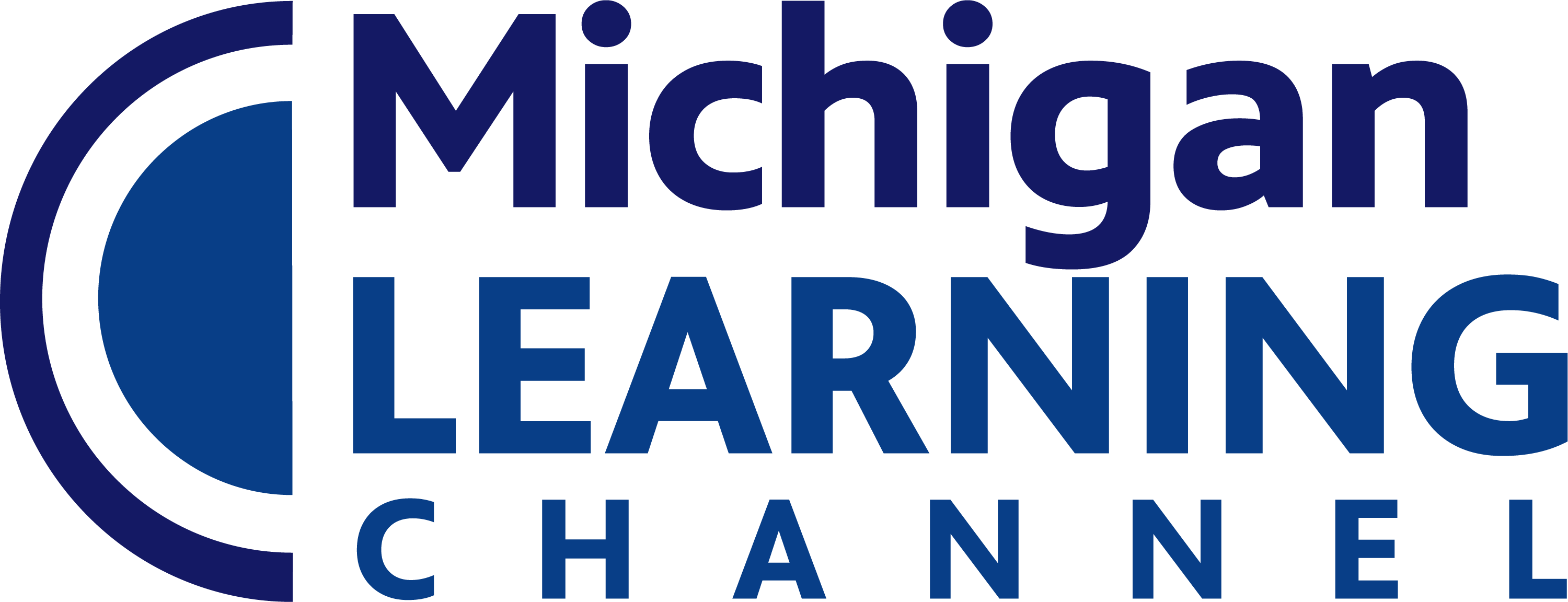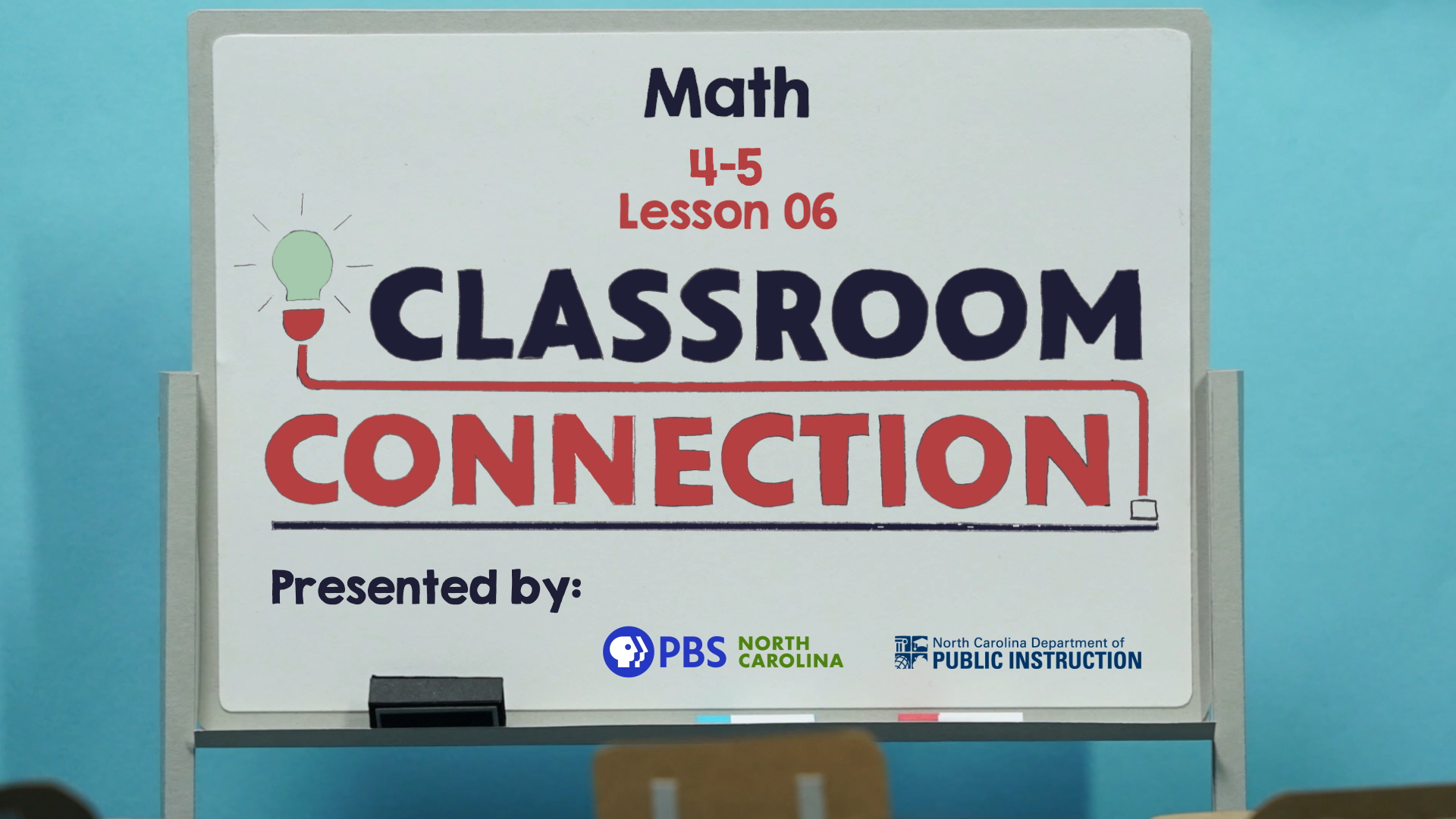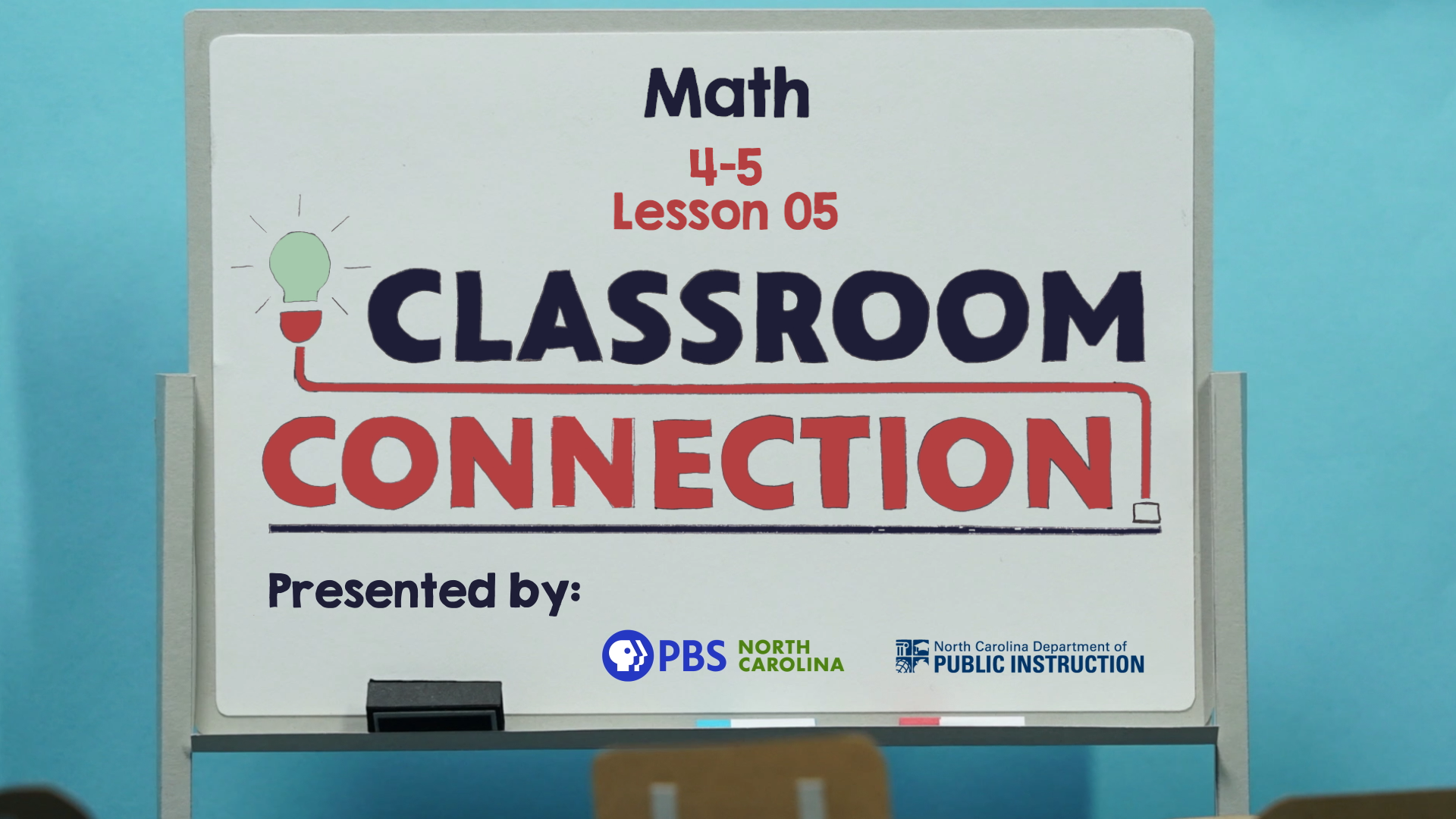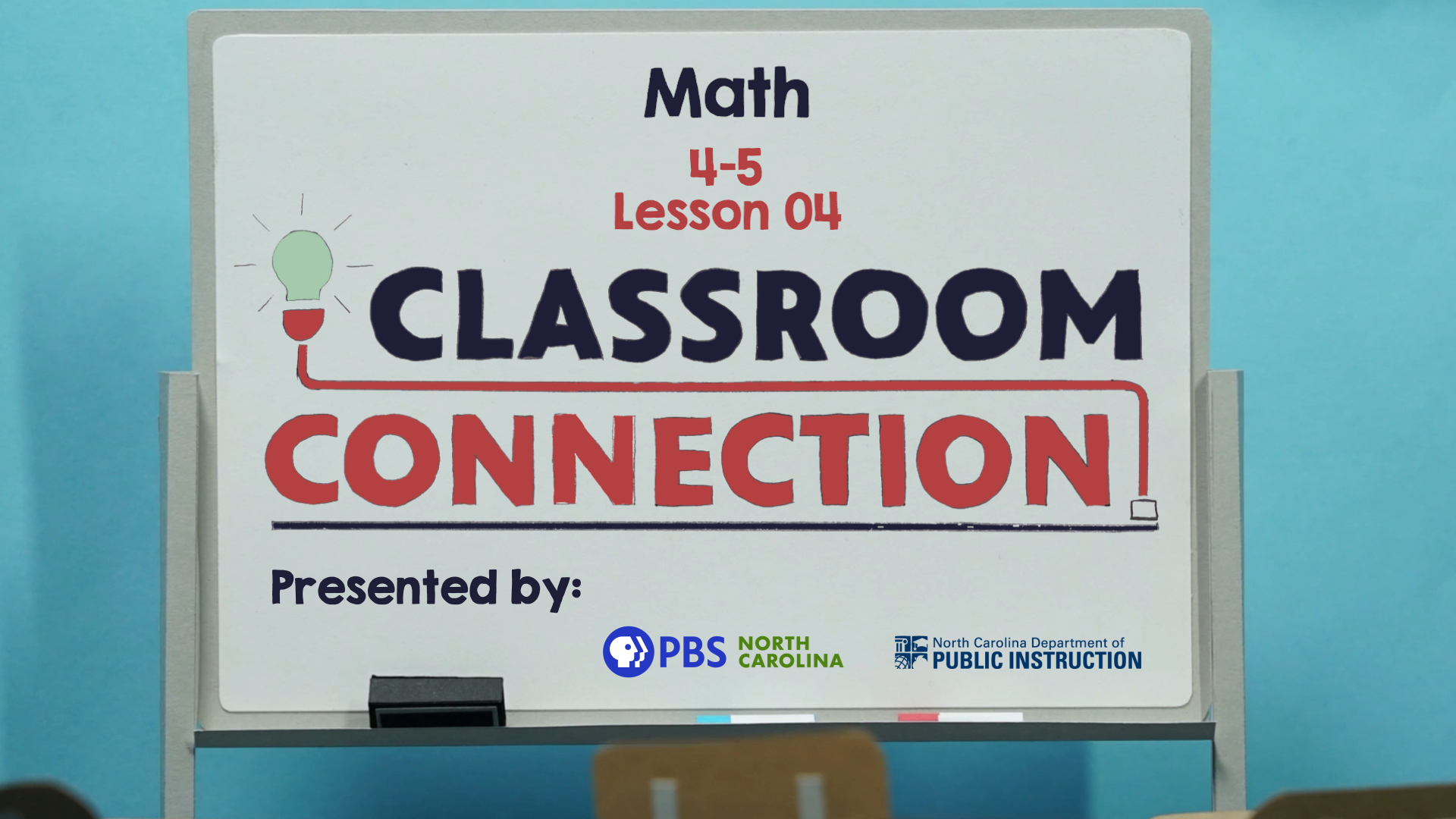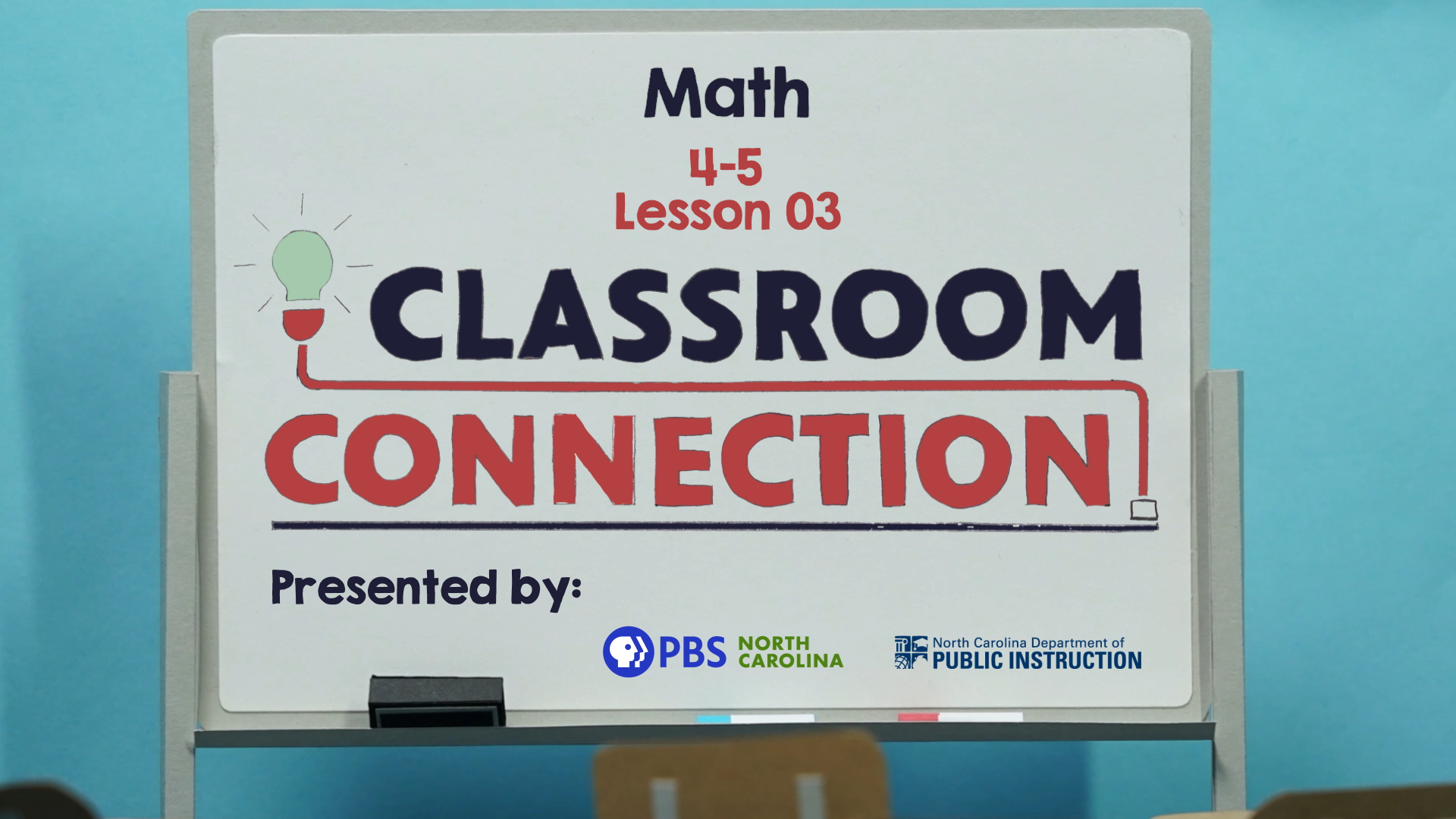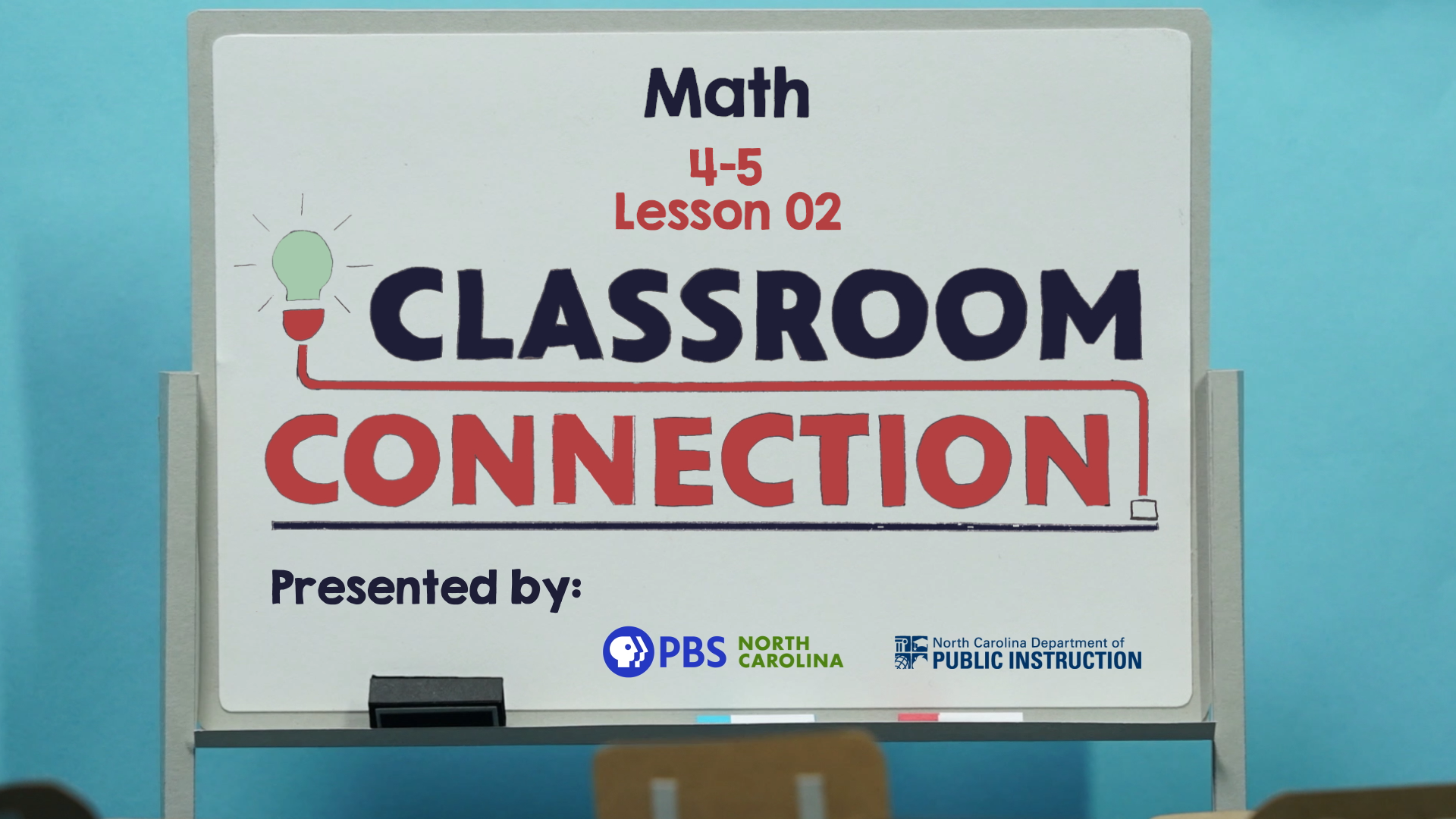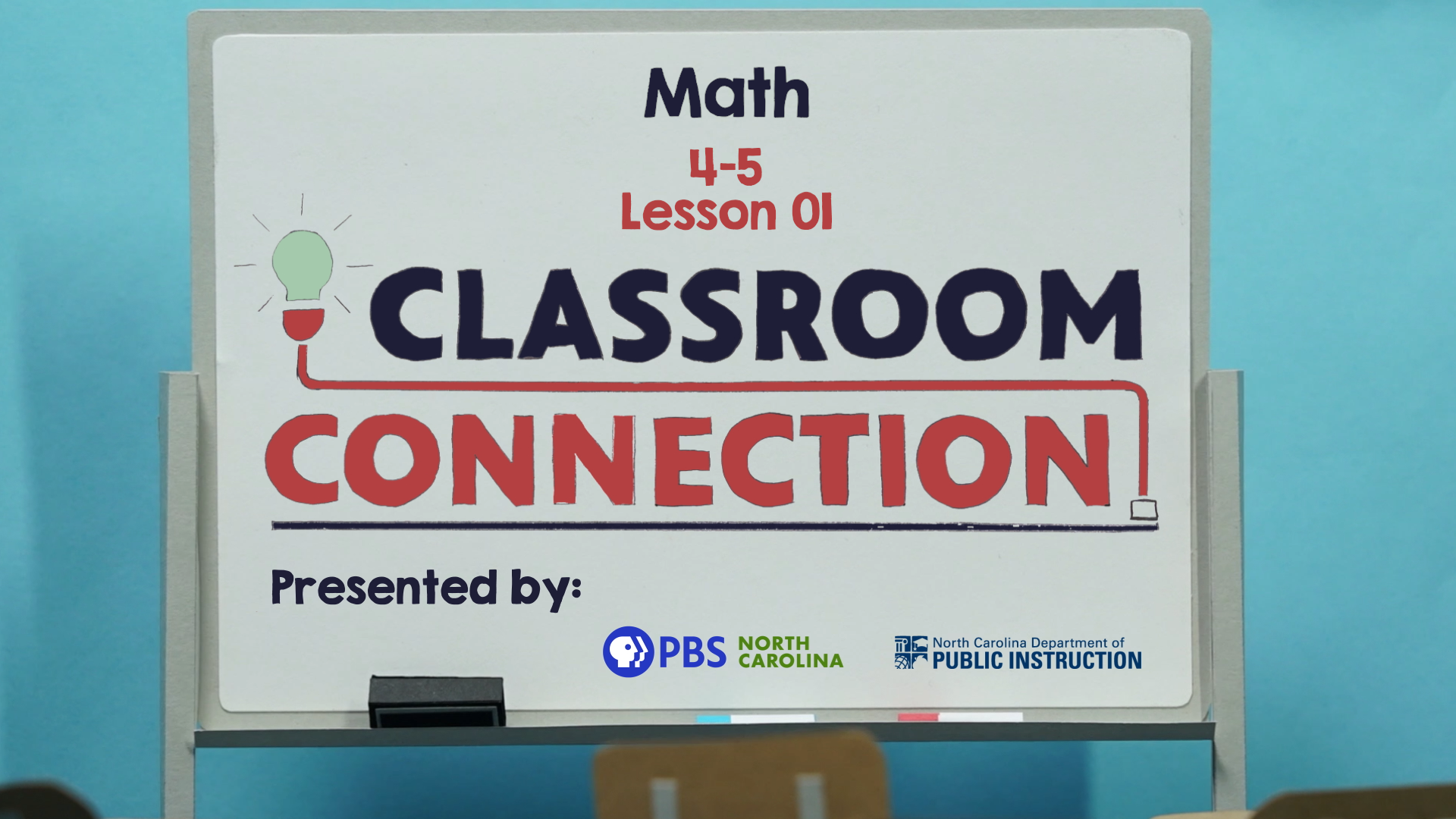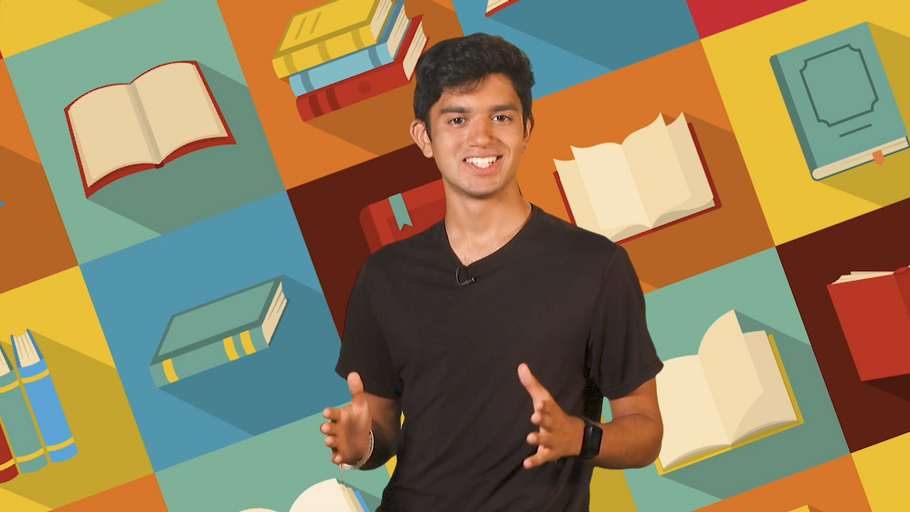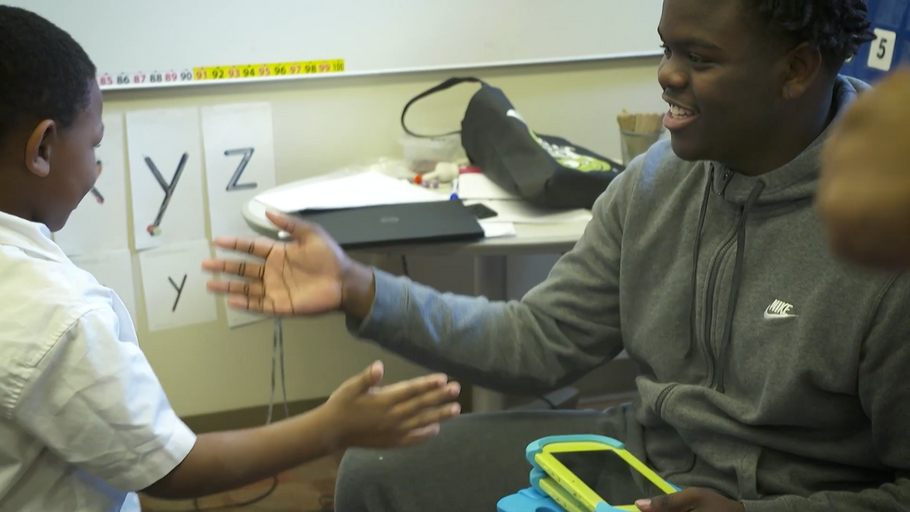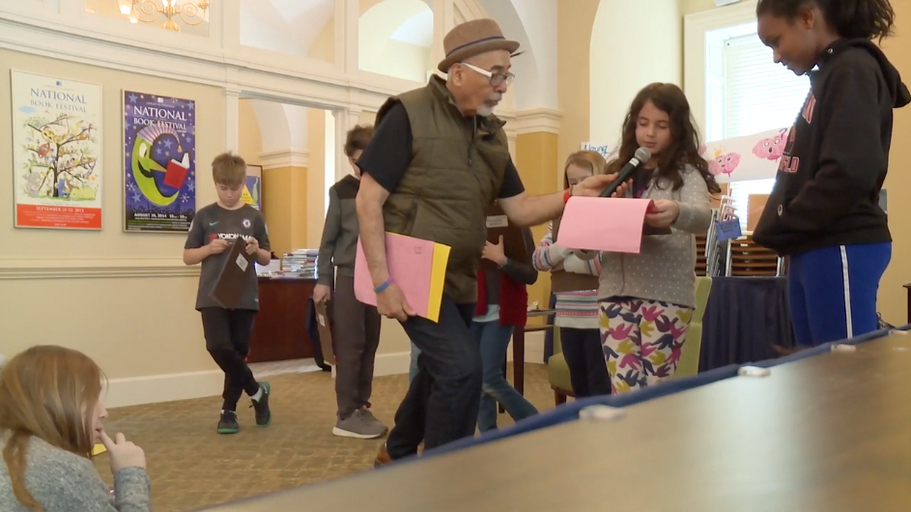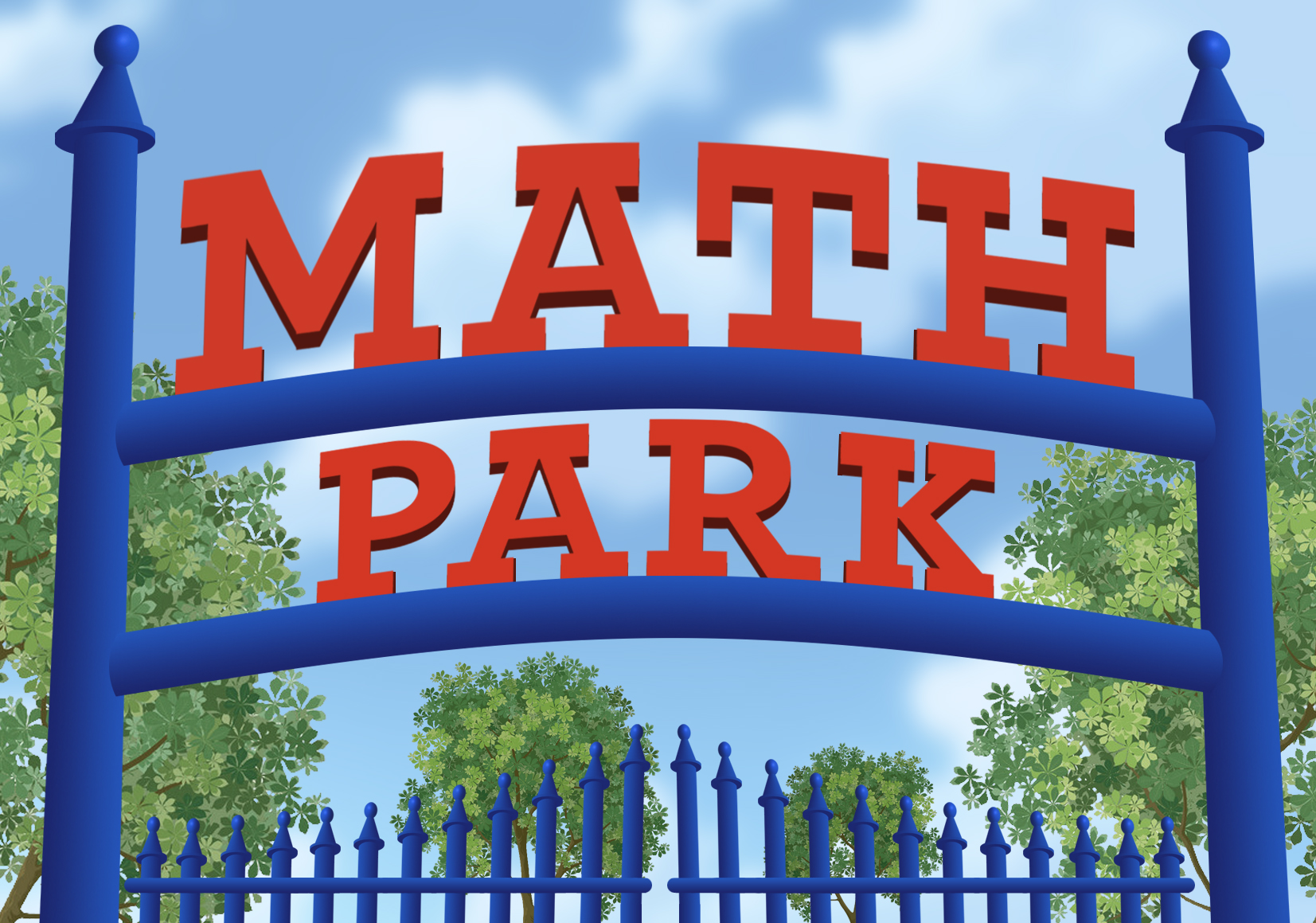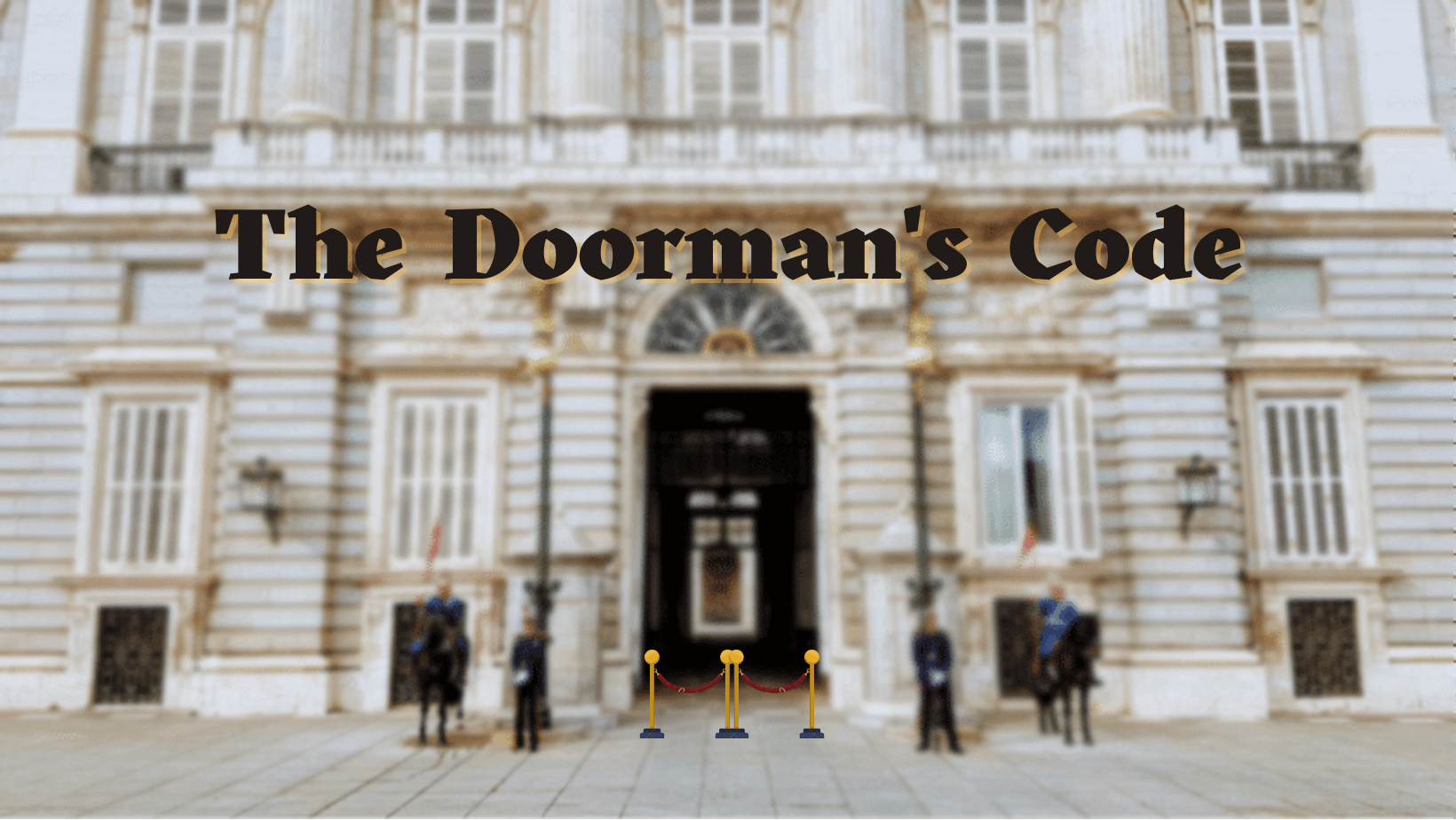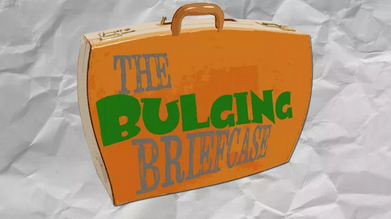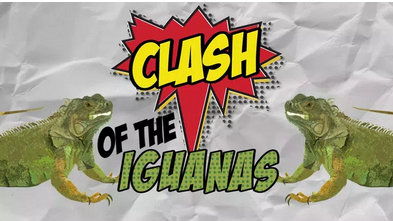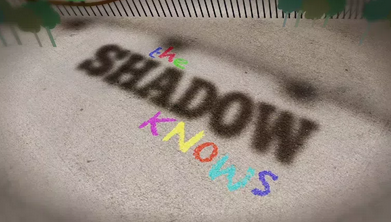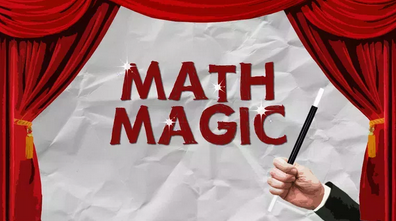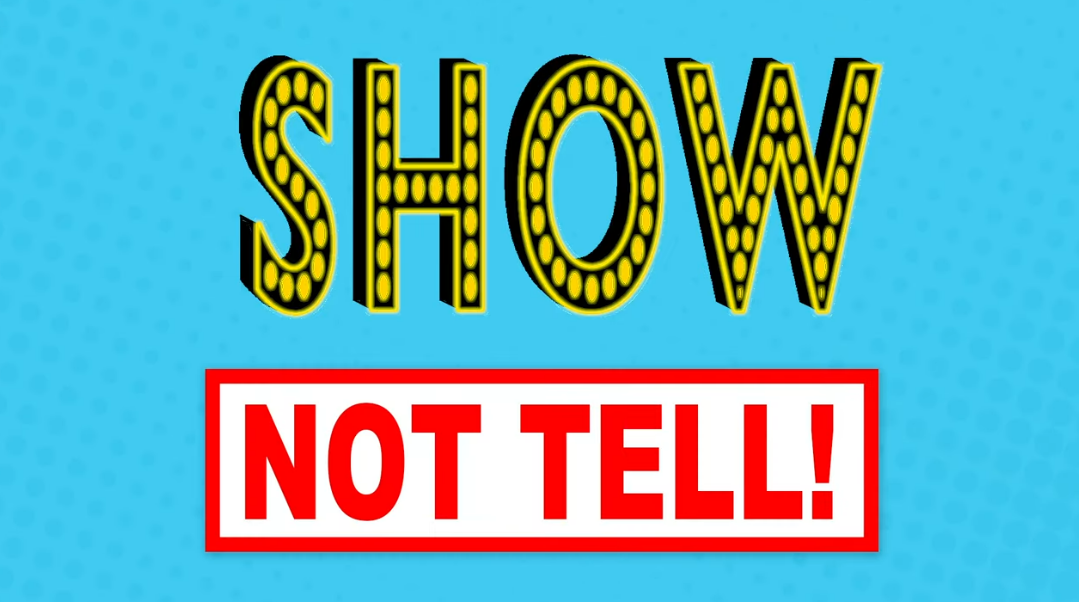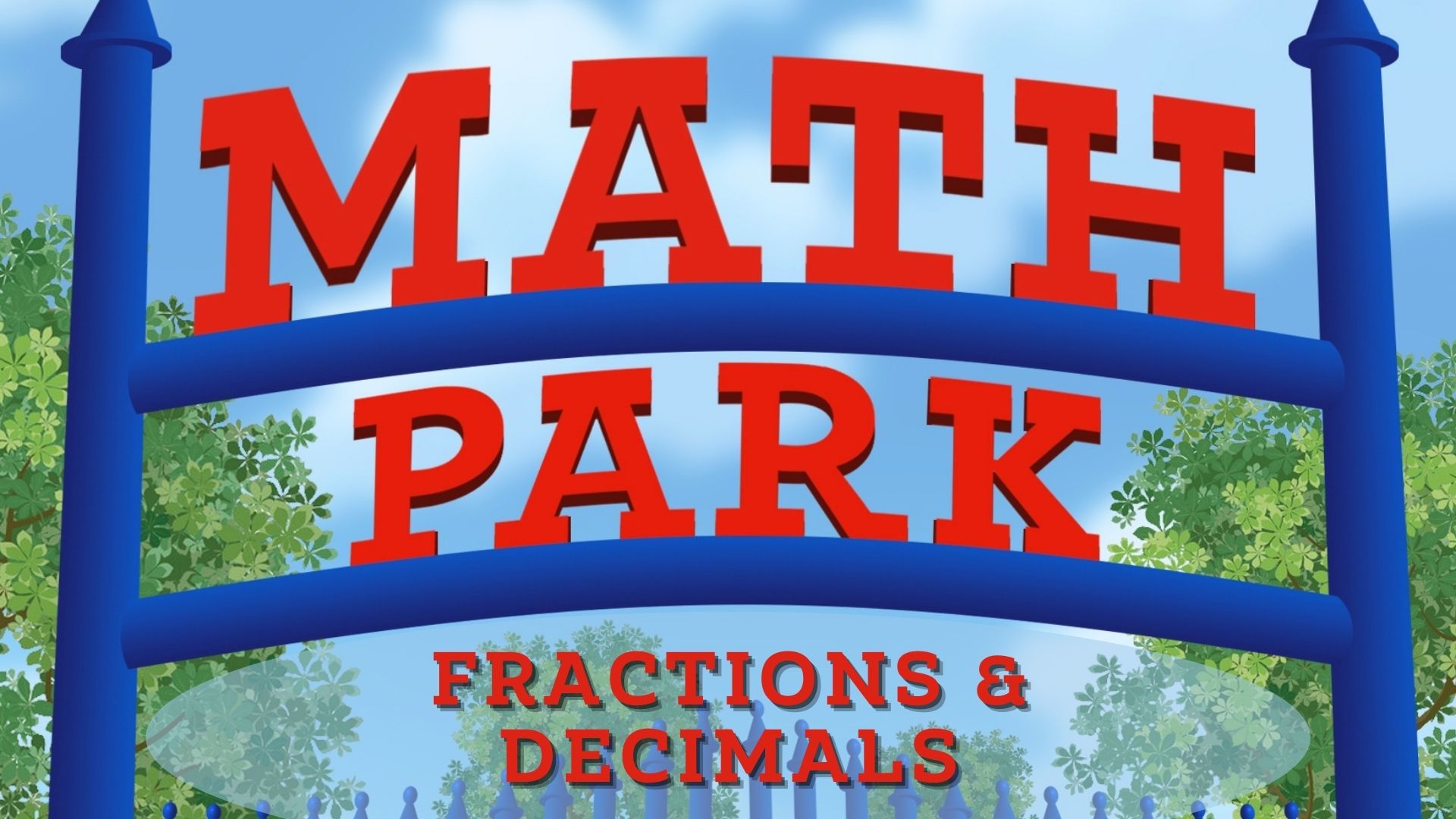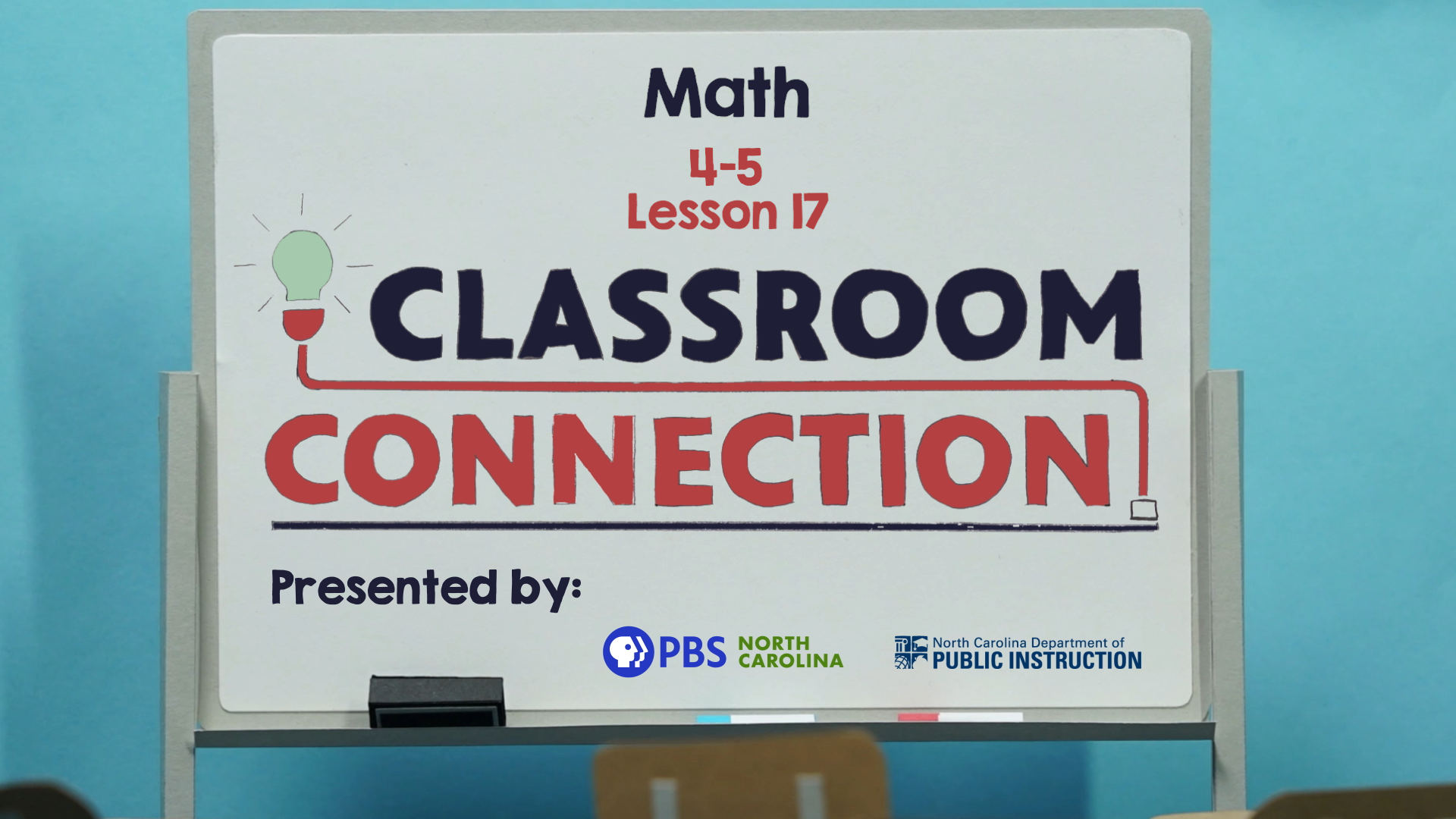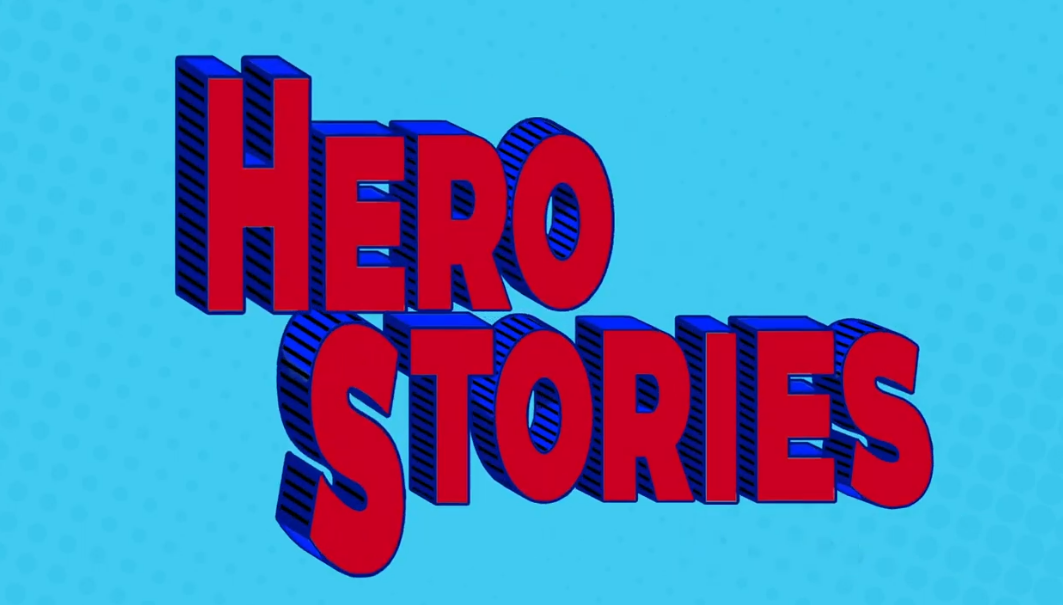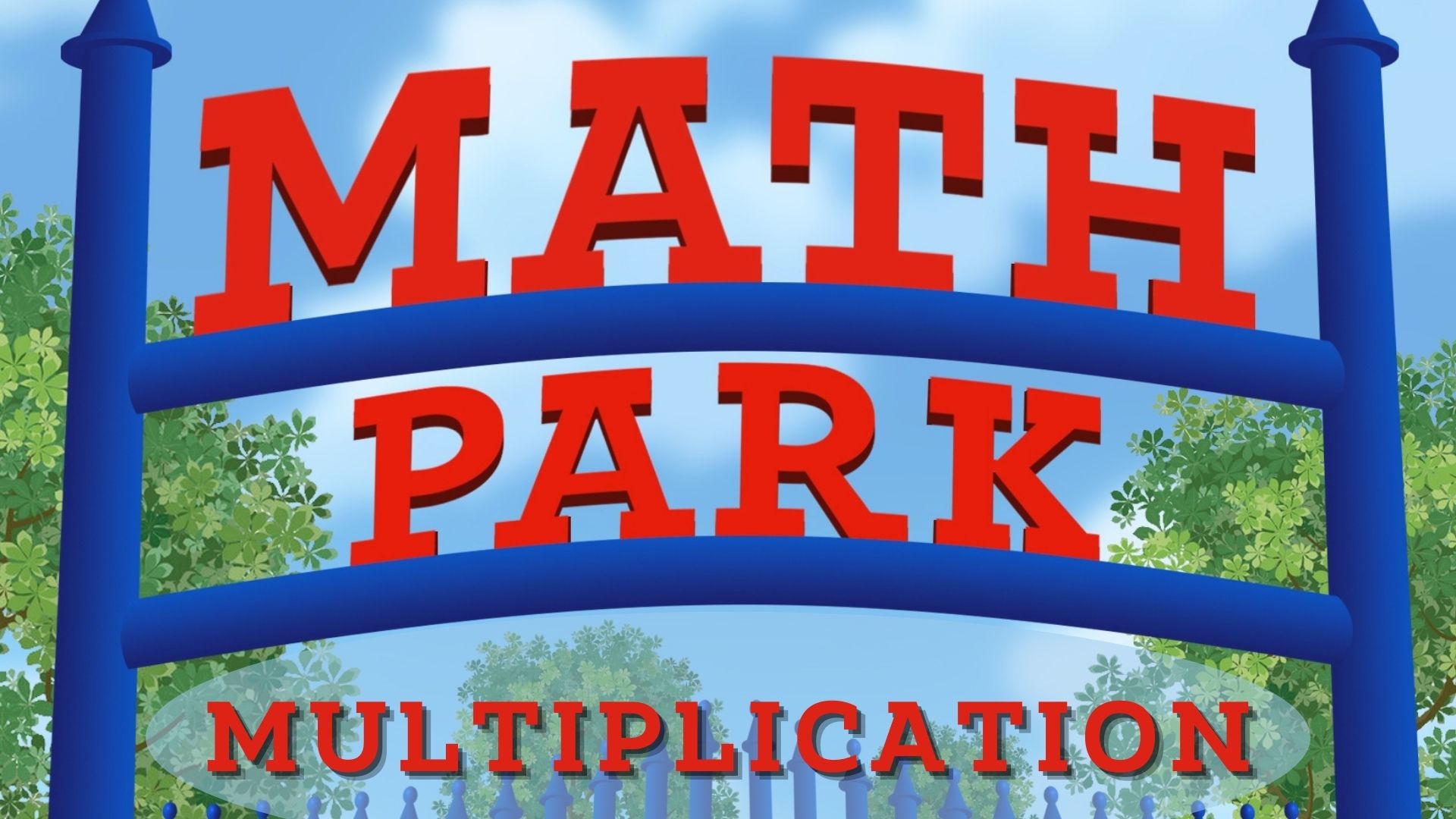Subjects
Shows
Lesson 6
Decompose shapes into rectangles to determine the perimeter of the composite shape using the perimeter formula for rectangles. Decompose shapes into rectangles to determine the perimeter of the composite shape.
Lesson 5
Use attributes of quadrilaterals (number of sides and type of angles) to sort and classify shapes. Use attributes of quadrilaterals to sort and classify shapes.
Lesson 4
Use your body and form several yoga poses to help create, describe, and name different types of triangles. Name their angles. Move into yoga poses to help create, describe, and name different types of triangles.
Lesson 3
Move on a physical place value chart to help understand that in a multi-digit whole number, a digit in one place represents ten times what it represents in the place to its right. Move on a physical place value chart to understand the "times 10" pattern.
Lesson 2
Recognize that in a multi-digit number, a digit in one place represents 10 times as much as it represents in the place to its right. Hunt for patterns in the number of zeros of the product when multiplying a number by powers of 10. Hunt for patterns in the product when multiplying a number by 10.
Lesson 01
Multiply a two-digit by a one-digit whole number using strategies based on place value and the properties of operations. Illustrate and explain the calculation by using equations, rectangular arrays, and/or area models. Multiply whole numbers using place value strategies & the properties of operations.
Lesson 205
Take a closer look at coding - and get some advice about how to get started. Content partners include Code.org, WKAR, Career Girls, Detroit Public Television, West Michigan Works!, and youcubed at Stanford University. Featuring student host, Yash.
Lesson 203
Jabberwalk with a famous poet, learn about storytelling, and meet some cool writers. Content partners include Career Girls, StoryCorps, Inside Out Literary Arts, InPACT at Home, PBS Books, Library of Congress, and The Diatribe. This episode features student host, Yash.
Lesson 112
Mister C and the Science Crew have all the tricks to make science exciting with optical illusions.
Lesson 111
Experimenting with pendulums, marble tracks and more.
You're trying to attend a secret meeting, but the doorman just keeps saying numbers at you! You notice that other [...]
Lesson 01
In today's episode, Lauren and Eric show us how Show Not Tell applies to character traits.
Lesson 2
In today's episode, Lauren and Eric show us how Show Not Tell applies to emotions.
Lesson 4
In today's episode, Lauren and Eric show us how to use similes to Show Not Tell.
Lesson 3
In today's episode, Lauren and Eric show us how Show Not Tell applies to emotions. Each episode of SPTV includes one of these educational lessons. Catch full episodes of Story Pirates on the Michigan Learning Channel.
Lesson 308
Represent fractions as parts of a set using the decimal fraction one-hundredth (0.01). Practice reading and writing decimals. Explore mixed fractions and decimals. Compare mixed decimals. Understand place value with mixed decimal numbers.
Lesson 307
Represent fractions as parts of a set using the decimal fraction one-tenth (0.1). Practice reading decimals. Explore mixed fractions and decimals. Compare mixed decimals.
Lesson 306
Use visual fraction models to add and subtract fractions with the same denominators. Notice patterns in the numerator and denominator of the sum and difference. Get some more practice with identifying and representing equivalent fractions.
Lesson 305
Explore, represent, and identify equivalent fractions. Compare fractions that are not equivalent.
Lesson 304
Use area models to represent fractions. Explore fractions as parts of a set. Use fractions as parts of a set to introduce the concept of equivalent fractions
Lesson 303
Compare fractions with the same numerator and different denominators. Compare and order fractions using bar models. Represent one whole using a fraction with equal numerator and denominator.
Lesson 302
Explore the meaning and relationship of the numerator and denominator in fractions. Identify fractions from visual representations such as rectangles, bars, and circles. Compare fractions with the same numerator and different denominators.
Lesson 301
Explore the concept of fractions as equal parts of a whole. Identify and represent fractions using pictures and words.
Lesson 112
In this episode, we'll figure out how to wrap up a story after the hero-sized problem is solved. Each episode of SPTV includes one of these educational lessons. Catch full episodes of Story Pirates on the Michigan Learning Channel.
Lesson 111
In this episode, we'll write the most action-packed parts of our story. Each episode of SPTV includes one of these educational lessons. Catch full episodes of Story Pirates on the Michigan Learning Channel.
Lesson 110
In this episode, we'll use different ways to get a reader interested in our story. Each episode of SPTV includes one of these educational lessons. Catch full episodes of Story Pirates on the Michigan Learning Channel.
Lesson 109
In this episode, we'll use some unique dialoge descriptors. Each episode of SPTV includes one of these educational lessons. Catch full episodes of Story Pirates on the Michigan Learning Channel.
Lesson 108
In this episode, we'll think about creative ways a hero can overcome obstacles. Each episode of SPTV includes one of these educational lessons. Catch full episodes of Story Pirates on the Michigan Learning Channel.
Lesson 107
In this episode, we'll decide how out hero should speak. Each episode of SPTV includes one of these educational lessons. Catch full episodes of Story Pirates on the Michigan Learning Channel.
Lesson 106
In this episode, we establish a conflict by giving our hero a hero-sized problem!
Lesson 105
In this episode, we make the hero a more well rounded character by showing the reader what they’re up to on a normal day, before the problem starts! Each episode of SPTV includes one of these educational lessons. Catch full episodes of Story Pirates on the Michigan Learning Channel.
Lesson 104
In this episode, we talk about why heroes need weaknesses. Each episode of SPTV includes one of these educational lessons. Catch full episodes of Story Pirates on the Michigan Learning Channel.
Lesson 103
Some of the first stories people told were about heroes, and they're still among the most popular stories today. In [...]
Lesson 102
In this episode, we talk about what a hero is!
Lesson 101
Some of the first stories people told were about heroes, and they're still among the most popular stories today. In this video series, we're going to be creating some of those stories about heroes, put them up against hero-sized problems, and help them come up with solutions that amaze us! In this episode, we talk about what a hero is! Each episode of SPTV includes one of these educational lessons. Catch full episodes of Story Pirates on the Michigan Learning Channel.
Lesson 209
Explore the Multiply by 9 facts by recognizing there is only one new fact: 9 x 9. Compete against characters to see who finds the product first. Play games and use your fingers to practice multiplying. Use multiplication facts you already know to help find the product when one factor is 9.
Lesson 208
Explore the Multiply by 8 facts using the grouping of objects and arrays. Compete against characters to see who finds the product first. Practice with the commutative property of multiplication and 8's. Use multiplication facts you already know to help find the product when one factor is 8.
Lesson 207
Explore the Multiply by 7 facts using the grouping of objects and arrays. Compete against characters to see who finds the product first. Practice with the commutative property of multiplication and 7's. Use multiplication facts you already know to help find the product when one factor is 7.
Subjects
Shows
Lesson 6
Decompose shapes into rectangles to determine the perimeter of the composite shape using the perimeter formula for rectangles. Decompose shapes into rectangles to determine the perimeter of the composite shape.
Lesson 5
Use attributes of quadrilaterals (number of sides and type of angles) to sort and classify shapes. Use attributes of quadrilaterals to sort and classify shapes.
Lesson 4
Use your body and form several yoga poses to help create, describe, and name different types of triangles. Name their angles. Move into yoga poses to help create, describe, and name different types of triangles.
Lesson 3
Move on a physical place value chart to help understand that in a multi-digit whole number, a digit in one place represents ten times what it represents in the place to its right. Move on a physical place value chart to understand the "times 10" pattern.
Lesson 2
Recognize that in a multi-digit number, a digit in one place represents 10 times as much as it represents in the place to its right. Hunt for patterns in the number of zeros of the product when multiplying a number by powers of 10. Hunt for patterns in the product when multiplying a number by 10.
Lesson 01
Multiply a two-digit by a one-digit whole number using strategies based on place value and the properties of operations. Illustrate and explain the calculation by using equations, rectangular arrays, and/or area models. Multiply whole numbers using place value strategies & the properties of operations.
Lesson 205
Take a closer look at coding - and get some advice about how to get started. Content partners include Code.org, WKAR, Career Girls, Detroit Public Television, West Michigan Works!, and youcubed at Stanford University. Featuring student host, Yash.
Lesson 203
Jabberwalk with a famous poet, learn about storytelling, and meet some cool writers. Content partners include Career Girls, StoryCorps, Inside Out Literary Arts, InPACT at Home, PBS Books, Library of Congress, and The Diatribe. This episode features student host, Yash.
Lesson 112
Mister C and the Science Crew have all the tricks to make science exciting with optical illusions.
Lesson 111
Experimenting with pendulums, marble tracks and more.
You're trying to attend a secret meeting, but the doorman just keeps saying numbers at you! You notice that other [...]
Lesson 01
In today's episode, Lauren and Eric show us how Show Not Tell applies to character traits.
Lesson 2
In today's episode, Lauren and Eric show us how Show Not Tell applies to emotions.
Lesson 4
In today's episode, Lauren and Eric show us how to use similes to Show Not Tell.
Lesson 3
In today's episode, Lauren and Eric show us how Show Not Tell applies to emotions. Each episode of SPTV includes one of these educational lessons. Catch full episodes of Story Pirates on the Michigan Learning Channel.
Lesson 308
Represent fractions as parts of a set using the decimal fraction one-hundredth (0.01). Practice reading and writing decimals. Explore mixed fractions and decimals. Compare mixed decimals. Understand place value with mixed decimal numbers.
Lesson 307
Represent fractions as parts of a set using the decimal fraction one-tenth (0.1). Practice reading decimals. Explore mixed fractions and decimals. Compare mixed decimals.
Lesson 306
Use visual fraction models to add and subtract fractions with the same denominators. Notice patterns in the numerator and denominator of the sum and difference. Get some more practice with identifying and representing equivalent fractions.
Lesson 305
Explore, represent, and identify equivalent fractions. Compare fractions that are not equivalent.
Lesson 304
Use area models to represent fractions. Explore fractions as parts of a set. Use fractions as parts of a set to introduce the concept of equivalent fractions
Lesson 303
Compare fractions with the same numerator and different denominators. Compare and order fractions using bar models. Represent one whole using a fraction with equal numerator and denominator.
Lesson 302
Explore the meaning and relationship of the numerator and denominator in fractions. Identify fractions from visual representations such as rectangles, bars, and circles. Compare fractions with the same numerator and different denominators.
Lesson 301
Explore the concept of fractions as equal parts of a whole. Identify and represent fractions using pictures and words.
Lesson 112
In this episode, we'll figure out how to wrap up a story after the hero-sized problem is solved. Each episode of SPTV includes one of these educational lessons. Catch full episodes of Story Pirates on the Michigan Learning Channel.
Lesson 111
In this episode, we'll write the most action-packed parts of our story. Each episode of SPTV includes one of these educational lessons. Catch full episodes of Story Pirates on the Michigan Learning Channel.
Lesson 110
In this episode, we'll use different ways to get a reader interested in our story. Each episode of SPTV includes one of these educational lessons. Catch full episodes of Story Pirates on the Michigan Learning Channel.
Lesson 109
In this episode, we'll use some unique dialoge descriptors. Each episode of SPTV includes one of these educational lessons. Catch full episodes of Story Pirates on the Michigan Learning Channel.
Lesson 108
In this episode, we'll think about creative ways a hero can overcome obstacles. Each episode of SPTV includes one of these educational lessons. Catch full episodes of Story Pirates on the Michigan Learning Channel.
Lesson 107
In this episode, we'll decide how out hero should speak. Each episode of SPTV includes one of these educational lessons. Catch full episodes of Story Pirates on the Michigan Learning Channel.
Lesson 106
In this episode, we establish a conflict by giving our hero a hero-sized problem!
Lesson 105
In this episode, we make the hero a more well rounded character by showing the reader what they’re up to on a normal day, before the problem starts! Each episode of SPTV includes one of these educational lessons. Catch full episodes of Story Pirates on the Michigan Learning Channel.
Lesson 104
In this episode, we talk about why heroes need weaknesses. Each episode of SPTV includes one of these educational lessons. Catch full episodes of Story Pirates on the Michigan Learning Channel.
Lesson 103
Some of the first stories people told were about heroes, and they're still among the most popular stories today. In [...]
Lesson 102
In this episode, we talk about what a hero is!
Lesson 101
Some of the first stories people told were about heroes, and they're still among the most popular stories today. In this video series, we're going to be creating some of those stories about heroes, put them up against hero-sized problems, and help them come up with solutions that amaze us! In this episode, we talk about what a hero is! Each episode of SPTV includes one of these educational lessons. Catch full episodes of Story Pirates on the Michigan Learning Channel.
Lesson 209
Explore the Multiply by 9 facts by recognizing there is only one new fact: 9 x 9. Compete against characters to see who finds the product first. Play games and use your fingers to practice multiplying. Use multiplication facts you already know to help find the product when one factor is 9.
Lesson 208
Explore the Multiply by 8 facts using the grouping of objects and arrays. Compete against characters to see who finds the product first. Practice with the commutative property of multiplication and 8's. Use multiplication facts you already know to help find the product when one factor is 8.
Lesson 207
Explore the Multiply by 7 facts using the grouping of objects and arrays. Compete against characters to see who finds the product first. Practice with the commutative property of multiplication and 7's. Use multiplication facts you already know to help find the product when one factor is 7.
